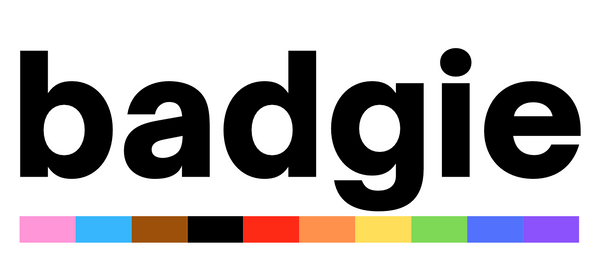
Introducing LGBTQIA+ Inclusion in Workplaces: For Employers, Supervisors and Employees
Share
It’s always a great time to be thinking about LGBTQIA+ inclusion in the workplace. If you're part of the LGBTQIA+ community, you may feel at the mercy of supervisors or employers who aren’t as committed to the cause as you. Or perhaps you’re a committed supervisor but you’re worried you’ve left things too late and don't know where to start.
It can be intimidating to introduce inclusion into the workplace as an employee, supervisor, or employer. Often the hardest part is getting started. Below are some tips to influence positive change - no matter who you are or what role you are in.
Update policies and procedures
Sorry, we have to start with the dry stuff, because well-written policies and procedures that protect LGBTQIA+ people is absolutely vital for a long-term inclusive company culture (and it can often get missed behind a façade of rainbow washing). Do your company’s internal policies use gender inclusive language? Are there any policies that specifically target LGBTQIA+ discrimination? What about leave benefits for trans and gender diverse employees? When recruiting, is your language welcoming to the LGBTQIA+ community?
Celebrate diversity in the workplace
This is the fun part with rainbows and cupcakes, but don’t discount its importance. Celebrating key pride events shows you are in tune with the LGBTQIA+ community and helps contribute to an inclusive workplace culture. For too long, businesses have been ‘neutral’ on LGBTQIA+ issues, all the while 39% of LGBTQIA+ people, and 55% of trans and gender diverse people do not always feel accepted at work1. Let’s push past the bare minimum of acceptance and make all LGBTQIA+ people feel celebrated at work.
Everyday visible inclusion
It’s important to foster a continuous culture of inclusivity, which is reinforced daily. This can be achieved through the use of visible active symbols supporting the LGBTQIA+ community. These symbols of support in the workplace can be pride lanyards, pride stickers and/or pronoun stickers and badges. They can also be posters or flags hung in the office, employee break rooms, or within customer spaces.
These reminders are especially important for LGBTQIA+ women (58%) and LGBTQIA women of colour (66%) who often experience ‘onlyness’, where they are the only person in a room, meeting room, or office of their gender, race or ethnicity, and orientation2.
LGBTQIA+ employee involvement
No matter how far along your employer is in its LGBTQIA+ inclusion journey, the focus should always be on making a safer, better environment for LGBTQIA+ employees, not just ticking boxes or eating delicious rainbow cupcakes (don’t get rid of the cupcakes though – everyone likes cupcakes!).
Where possible, seek out feedback from LGBTQIA+ employees on what change they would like to see within your workplace and include them in the decision-making process. However, it’s equally important not to put the burden of inclusive work (planning an IDAHOBIT event, updating policy documents, etc) exclusively on LGBTQIA+ employees.
If your company doesn’t have any out LGBTQIA+ employees, this isn’t a reason not to start or continue inclusive practices. 68% of LGBTQIA+ employees in Australia are not out to everyone at work3. Strive towards a safe, welcoming environment for current and future employees to be their full selves at work.
Employers, you have the power to make positive change for your employees, customers, or patients. If you’re hesitating because there's not enough time to launch the perfect initiative, start small and be transparent about your progress. I promise you’ll regret it more next year if you haven’t started at all. Remember, doing something is better than nothing.
Supervisors, depending on your company, you may not have a lot of power to affect change higher up, but you can make a big difference to your team. Your actions are more important than you know. Lead by example and make it clear you want everyone to feel safe at work.
Employees, remember, especially if you’re a member of the LGBTQIA+ community, it’s not solely up to you to make your company spew rainbows. Take a break and look out for yourself, too.
Written by Kate Sargeant (she/they).
Kate is a queer writer living in Naarm. She is a book and cat lover with a degree in Creative Writing. You can find them at the beach in any weather.
References
- Private Lives 3: The health and wellbeing of LGBTIQ people in Australia, 2020.
- Women in the workplace, 2019.
- Out at work, 2018.

